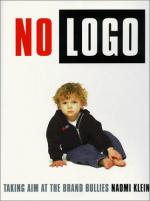|
This section contains 1,453 words (approx. 4 pages at 400 words per page) |

|
Chapters 9-11 Summary and Analysis
New corporate philosophy is this: products are made in factories; brands are what consumers buy. Promoting a brand is, moreover, an expensive business. There is both physical and air space to be purchased if the brand is to thrive. Because a corporation has to allocate its financial resources in a way that returns the greatest profit, it became obvious that production costs had to be reduced. The means to do this were found in third world countries, where cheap labor could be acquired, allowing, in some instances, as much as a four hundred per cent markup on the product once it returned to the developed, consumer-driven country. This markup allowed top executive salaries and amounts needed to expand "brand space" throughout a country. Nike was the first corporation to adopt this strategy, and its model has been emulated by...
(read more from the Chapters 9-11 Summary)
|
This section contains 1,453 words (approx. 4 pages at 400 words per page) |

|




